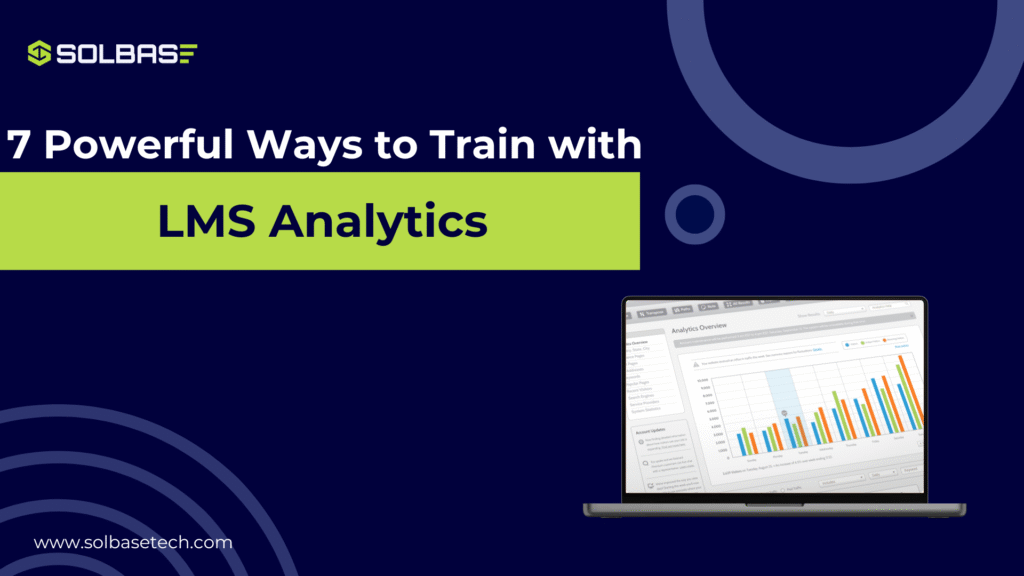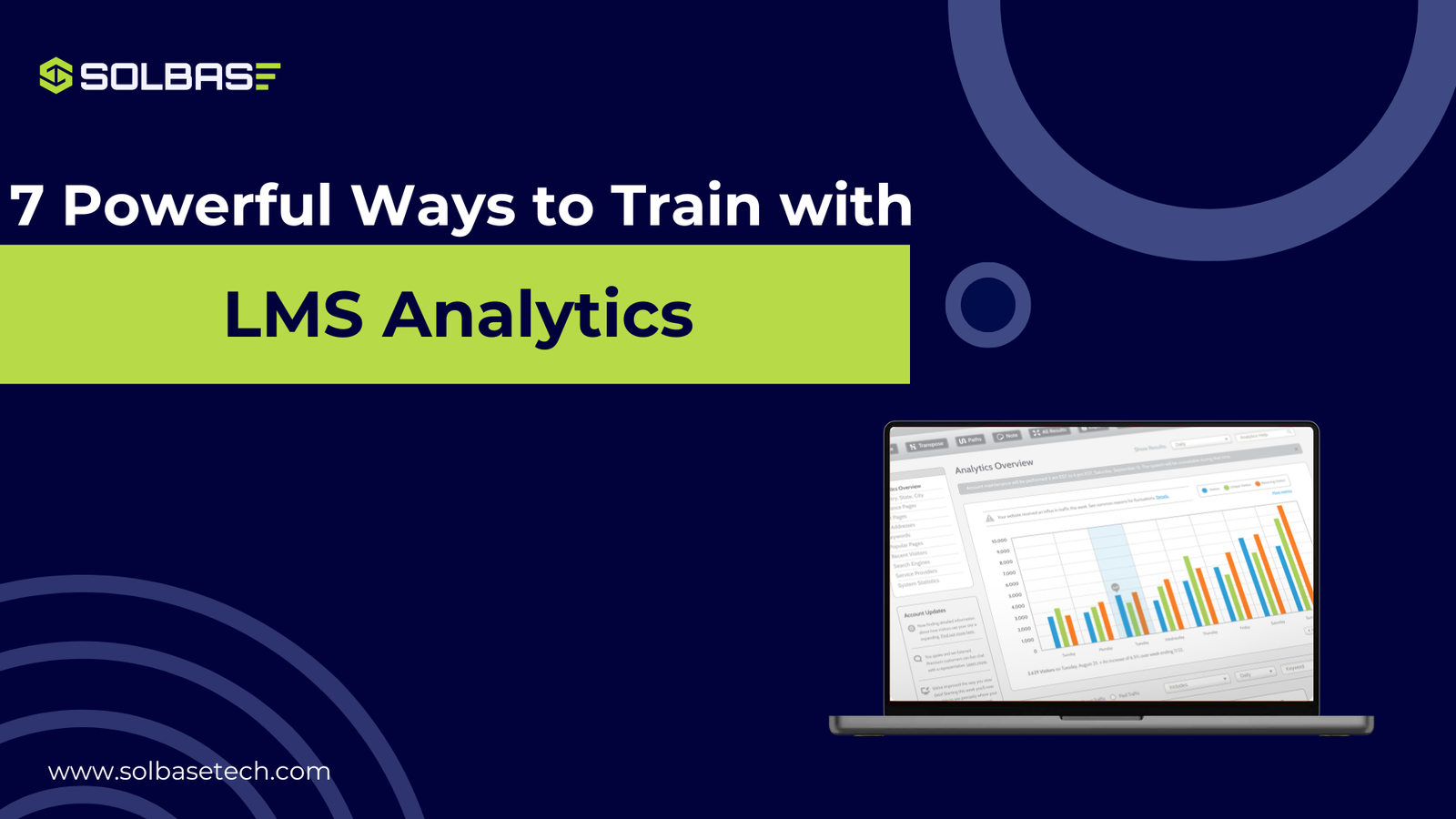7 Powerful Ways to Use LMS Analytics and Transform Your Training Success

Most of the training programs face one big problem with LMS Analytics. How do you understand if your students are learning the lessons or just visiting or clicking through the course without understanding anything?
One of the most powerful tools you have is LMS Analytics. It can give you deep insights, but it’s only valuable if you know how to use it the right way.
It gives you clear data about how students learn, where they face problems, and what needs improvement. When you use these insights in the right way, you can make your courses better, keep learners interested, and help them achieve real success.
In this blog, you will learn seven simple and powerful ways to use LMS Analytics to make your training programs more effective.
1. Find LMS Learning Problems Early
LMS Analytics will help you to see where your learners face difficulties. You can track their quiz scores, see how much time they spend on each lesson, and find the exact points where they lose interest in the course or stop learning.
For example, if many students leave a course after the same lesson, it may mean that the topic is confusing or too long.
When you find the problem early in your course, you can fix it quickly. Here are some suggestions for better understanding.
SUGGESTION:
- You can change or modify your whole content of course.
- You can identify which lessons are most engaging and use that style in other parts of the course.
- You can offer expert help to your learners.
- You can reward students who are performing well to motivate others.
- You can plan better future courses based on the insights you get.
2. Improve Course Design with Real Data
Instead of guessing what is working, LMS Analytics gives you real data about learner behavior.
You can clearly see which videos they watch, which lessons they skip, and how much time they spend on each part of the course. This helps you understand what truly engages them and what needs improvement.
If a course video is too long, the students will skip it early. You can make it shorter or more engaging.
If they spend a lot of time on a quiz, you can check if the questions are too hard.
Using real data helps you design courses that learners enjoy and finish with confidence.
If you are using LearnDash or other LMS platforms and need expert help, check out our LMS development services.
3. Boost Quiz Performance with Clear Assessment Insights
Quizzes are not just tests. They are powerful feedback tools that help you find where content gaps exist or where the wording might be unclear.
You can also see how much time your learners spend on each question to know whether they are confused or facing any issue to understand the content.
PRO TIP: A smart approach is to use this data to improve your quizzes. Make changes where needed so learners clear concepts before moving to the next one. This makes your LMS course stronger and gives better results.
5. Prove ROI and Make Smart Business Decisions with Data
Whether you are selling courses or training your team, LMS Analytics helps you clearly show the real value of your programs.
You can track important metrics like enrollment numbers, course completion rates, and learner satisfaction. These insights help you improve your courses, set the right pricing, and get support from stakeholders with confidence.
The simple truth is: when your decisions are backed by solid data, your business grows faster and smarter.
5. Measure Training Success Clearly
You cannot improve what you don’t measure. LMS Analytics gives you clear numbers like course completion rates, quiz scores, and time spent on each module. These numbers show if your training goals are being met.
By checking these results, you can make changes that actually work. You can also share the success of your program with your team or management confidently.
Clear measurement makes your training more professional and focused.
4. Personalize Learning Paths with Smart Segmentation
Every learner is different, and not everyone learns at the same speed or in the same way. With LMS Analytics, you can segment learners based on their performance, engagement, or background.
This helps you create personalized learning paths that match each group’s needs. You can send targeted emails, give extra support to learners who are struggling, and offer advanced material to those who are ready to move ahead.
If you’re using LearnDash, you can combine reporting with Groups and automation tools to deliver these tailored learning experiences on a larger scale.
If you want to learn more about LMS features, check out our blog on how to customize your LearnDash course page.
7. Predict Future Learning Trends
LMS Analytics is not just about the present. It also helps you plan for the future. By looking at patterns, you can guess what learners might need next.
For example, If your learners lose interest after some courses, you have to identify the main reason and fix it before launching the next one. If you see some students are at risk of dropping out, you can offer help early. Predicting trends keeps your courses strong and up to date.
Final Thoughts
LMS Analytics is more than just numbers. It helps you understand learners, improve your courses, and make smart decisions. By using these seven ways, you can turn your training programs into a strong and effective learning experience.
To get expert support for your LMS platform, visit our LMS Development services and explore all the services we offer.
For additional reading, you can also visit this helpful resource from LearnWorlds.



